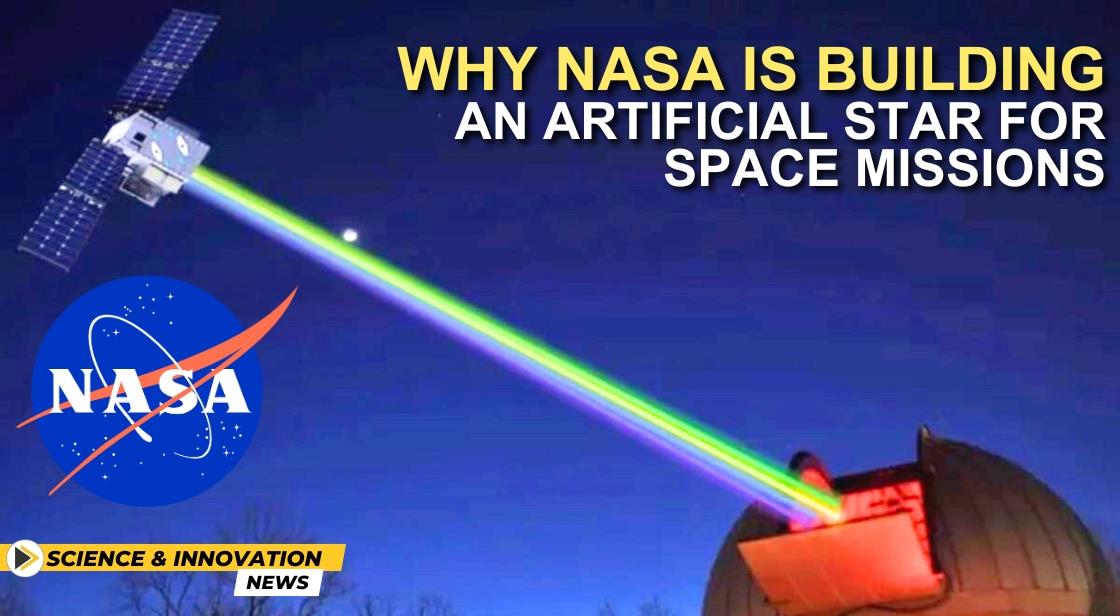Why NASA Is Building an Artificial Star for Space Missions

News Synopsis
NASA is preparing for an ambitious mission to launch an artificial star into space, a project designed to enhance the precision of astronomical measurements.
This mission, named Landolt, features a device roughly the size of a toaster, equipped with eight lasers. Its primary goal is to simulate the light from stars and other celestial objects, such as supernovas, by directing laser beams toward instruments on Earth.
Enhancing Astronomical Measurements
The $19.5 million Landolt mission aims to enable scientists to achieve more accurate measurements of real stars. Researchers anticipate that the data collected will also aid in the study of dark energy, the mysterious force believed to drive the universe's accelerated expansion.
David Ciardi, deputy director of the NASA Exoplanet Science Institute and an astronomer at Caltech, highlighted the mission's importance. He noted that current instruments can only measure the true brightness of stars to within a few percent.
The Landolt mission aims to improve this accuracy by more than tenfold, significantly enhancing our understanding of stars and the planets that orbit them.
The Legacy of Arlo Landolt
The mission is named in honor of the late astronomer Arlo Landolt, renowned for his extensive catalogs of stellar brightness, which have been fundamental to astronomy since 1973.
Daniel Huber, an associate astronomer and professor at the University of Hawaii, emphasized Landolt's enduring impact on the astronomical community. The Landolt mission's artificial star will function as a point of reference.
Scientists can create new, more precise catalogs of stellar brightness by comparing its known brightness to that of distant stars. Although the artificial star will not be visible to the naked eye, it can be observed through a telescope.
Addressing the Mystery of Dark Energy
In addition to refining stellar measurements, the Landolt mission aims to deepen our understanding of the universe's expansion. By studying the brightness of distant stars, researchers hope to gain insights into dark energy, one of the most significant mysteries in astronomy today.
The artificial star's precise and consistent light source will provide a benchmark, allowing astronomers to calibrate their instruments more accurately and obtain more reliable data.
Launch and Orbit
The spacecraft carrying the artificial star is slated to launch in 2029. It will orbit the Earth at a geostationary altitude of 22,236 miles, enabling it to remain fixed over a single point on the planet's surface. This stable position will allow for continuous and consistent observations, crucial for the mission's success.
Implications for Exoplanet Research
Jamie Tayar, an assistant professor of astronomy at the University of Florida and a member of the mission team, underscored the mission's fundamental importance. She noted that one of the mission's goals is to determine whether planets orbiting other stars could have conditions suitable for life, such as oceans.
For each star, it is essential to know exactly how much energy it emits and the precise distance of the planet from the star. By providing more accurate measurements of stellar brightness, the Landolt mission will contribute significantly to our understanding of the conditions necessary for life on other planets.
Conclusion
The Landolt mission represents a groundbreaking endeavor in astronomy. By launching an artificial star to serve as a reference point for measuring stellar brightness, NASA aims to improve our understanding of both the stars and the expansive universe they inhabit.
This mission not only honors the legacy of Arlo Landolt but also takes a significant step forward in our quest to explore the cosmos and the potential for life beyond Earth.
You May Like









